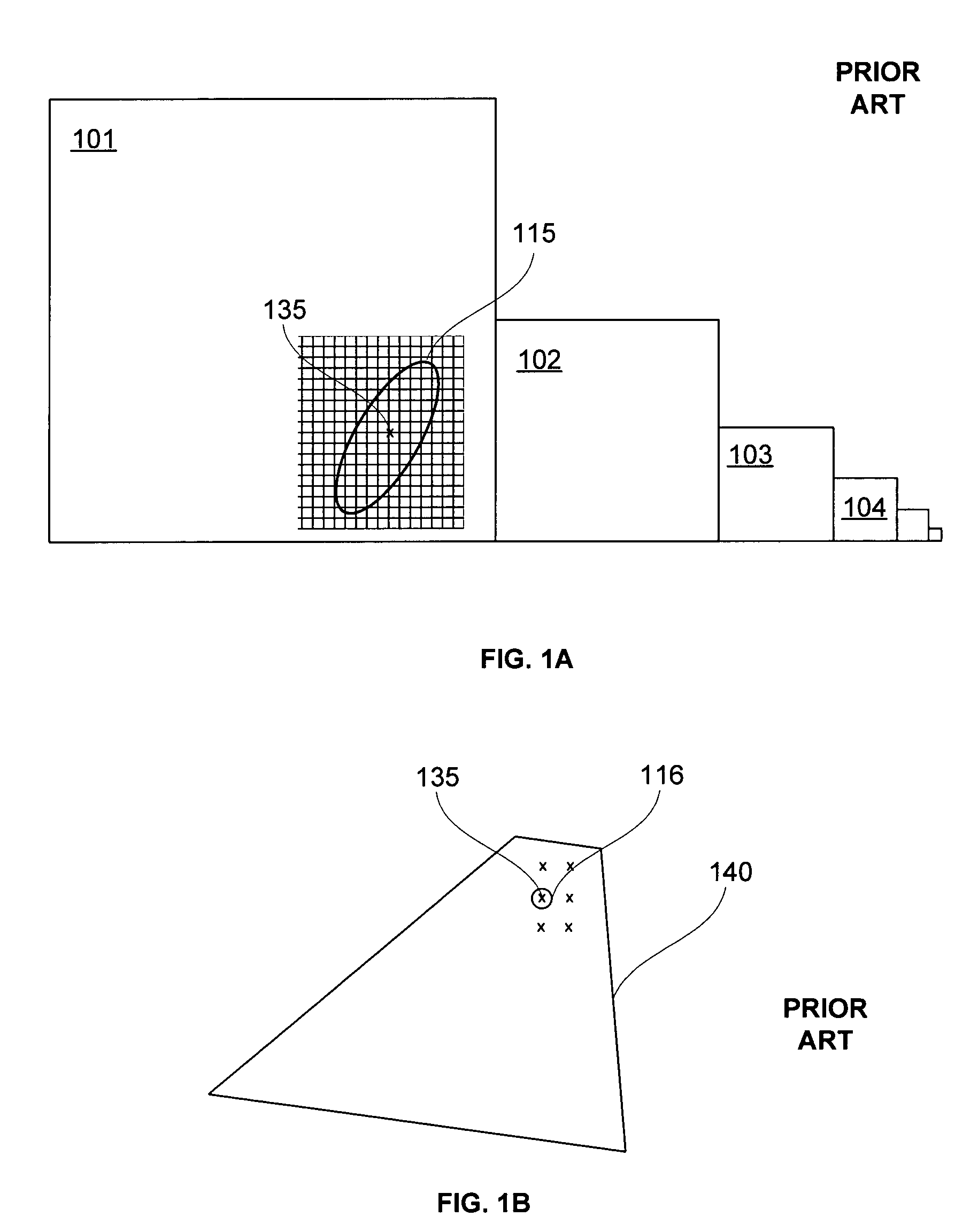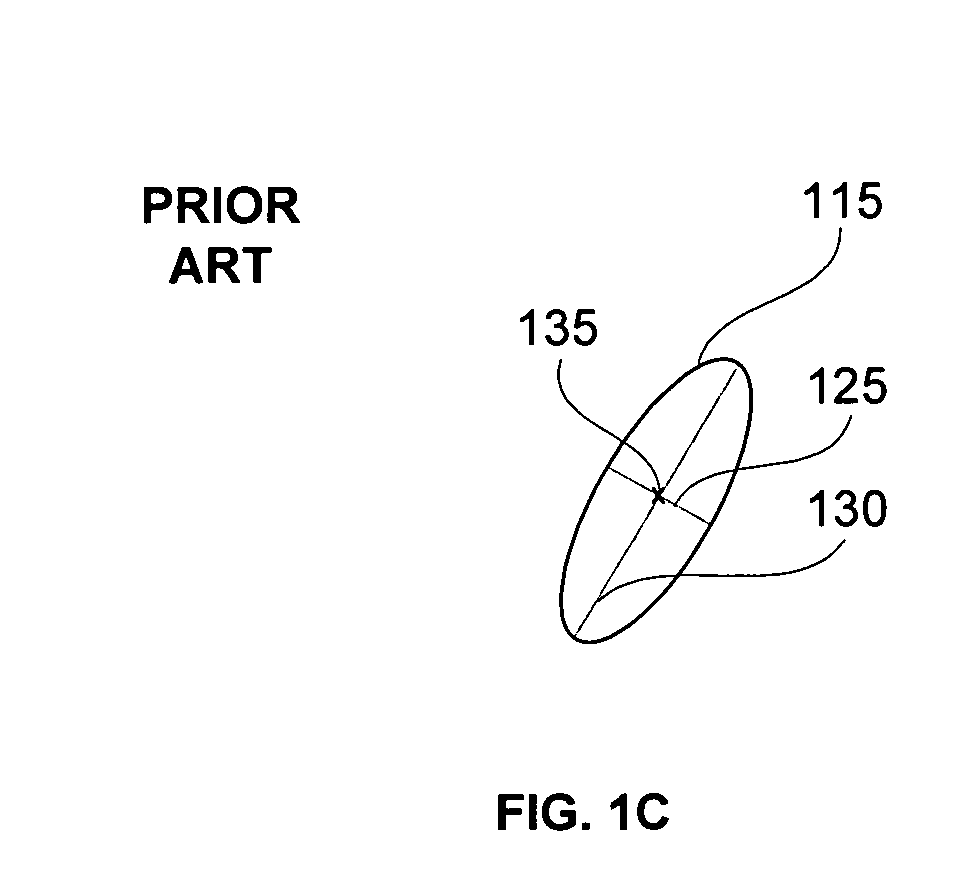Computing anisotropic texture mapping parameters
a texture mapping and anisotropic technology, applied in computing, 3d-image rendering, instruments, etc., can solve the problems of high cost of performance and/or die area, inability to accurately compute the length of major axis b>130/b> and minor axis b>125/b>, and achieve less die area, acceptable level of image quality, and reduced die area
- Summary
- Abstract
- Description
- Claims
- Application Information
AI Technical Summary
Benefits of technology
Problems solved by technology
Method used
Image
Examples
Embodiment Construction
[0026]In the following description, numerous specific details are set forth to provide a more thorough understanding of the present invention. However, it will be apparent to one of skill in the art that the present invention may be practiced without one or more of these specific details. In other instances, well-known features have not been described in order to avoid obscuring the present invention.
[0027]The major and minor axes of anisotropy define a footprint that represents the projection of the pixel onto the texture map. In the prior art, exact determination of the major and minor axes requires complex computations which are not cost effective to implement within the die area constraints of graphics processors. The major and minor axes may be approximated, and the approximations may be used to compute parameters, such as lengths of the major and minor axes and LOD values, for anisotropic texture mapping. Furthermore, the approximations are computed using less die area and usi...
PUM
 Login to View More
Login to View More Abstract
Description
Claims
Application Information
 Login to View More
Login to View More - R&D
- Intellectual Property
- Life Sciences
- Materials
- Tech Scout
- Unparalleled Data Quality
- Higher Quality Content
- 60% Fewer Hallucinations
Browse by: Latest US Patents, China's latest patents, Technical Efficacy Thesaurus, Application Domain, Technology Topic, Popular Technical Reports.
© 2025 PatSnap. All rights reserved.Legal|Privacy policy|Modern Slavery Act Transparency Statement|Sitemap|About US| Contact US: help@patsnap.com



